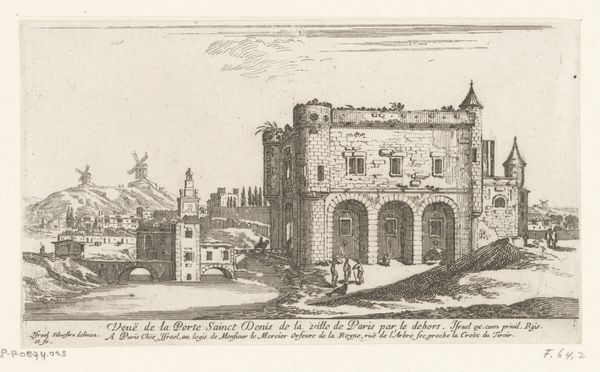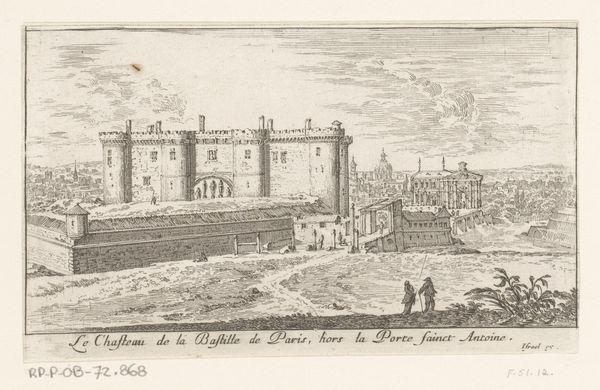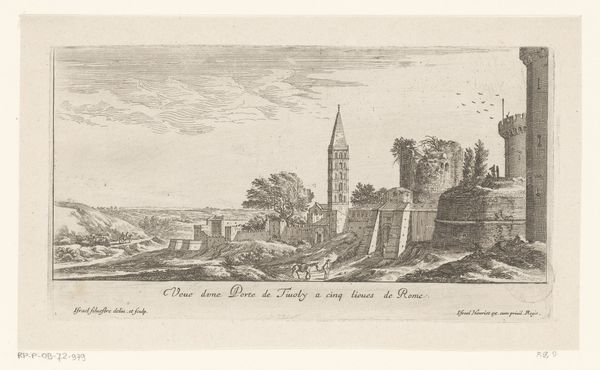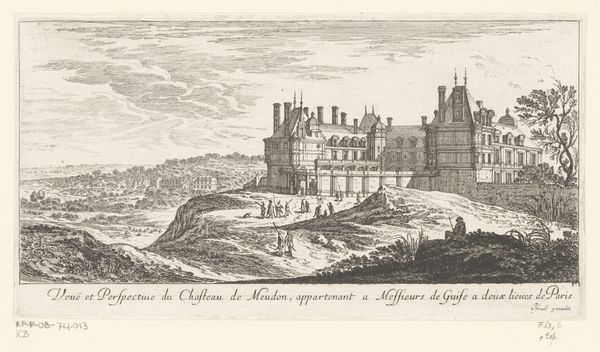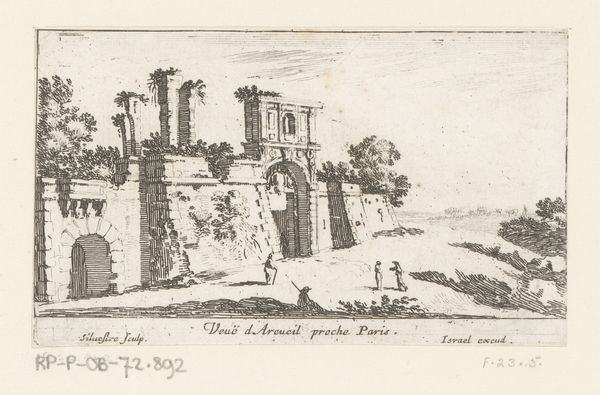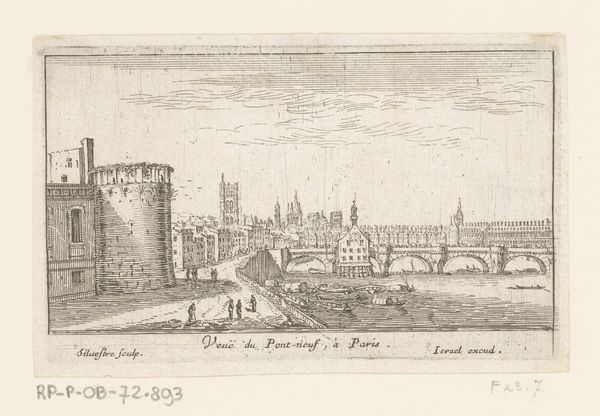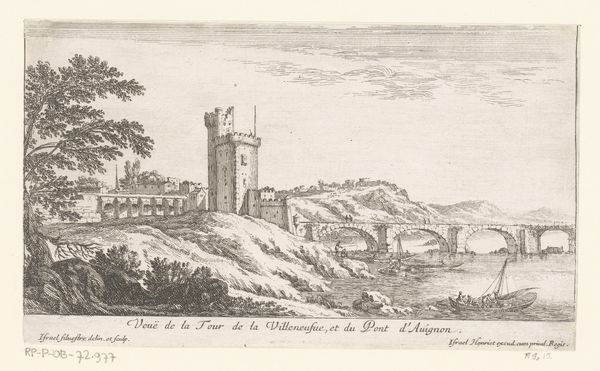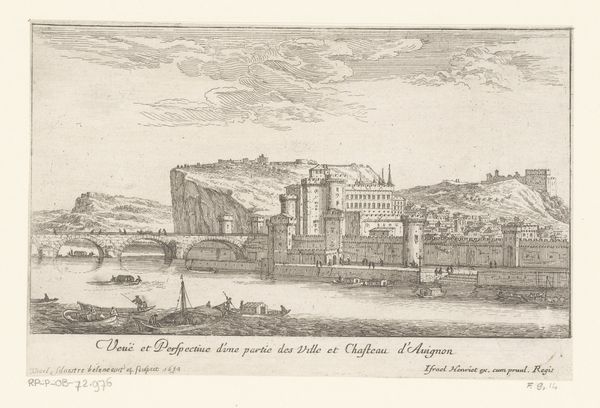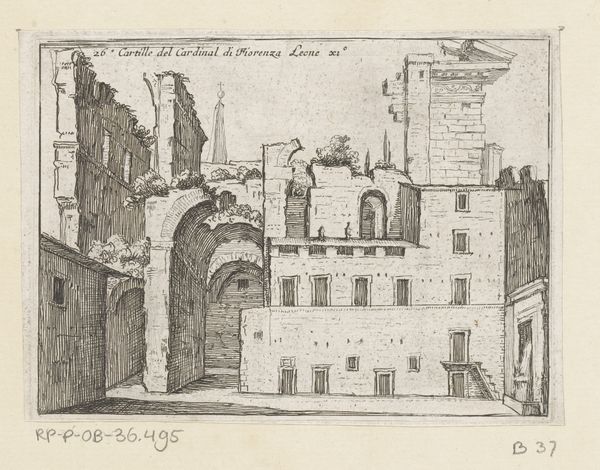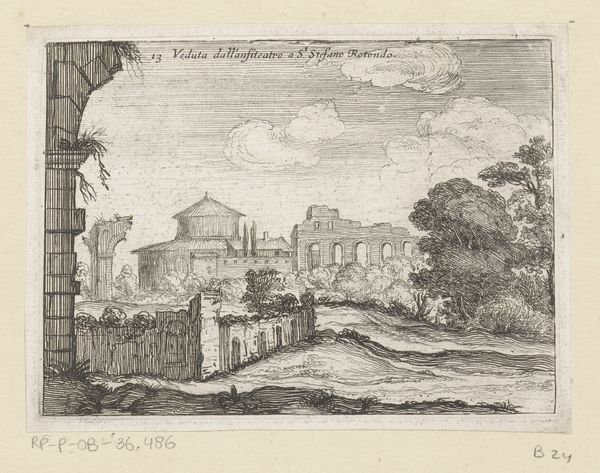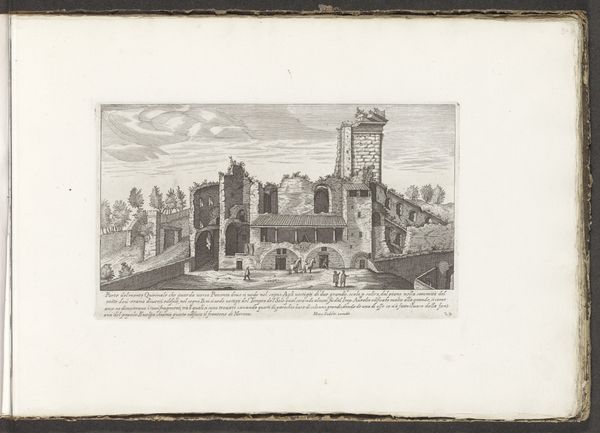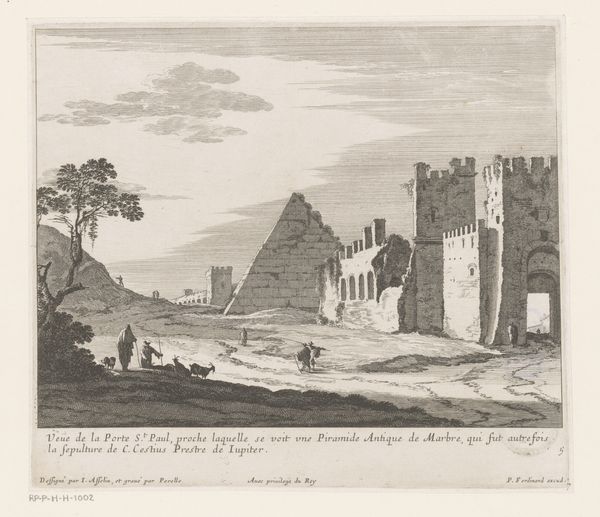
print, etching, engraving
#
baroque
# print
#
etching
#
landscape
#
cityscape
#
engraving
Dimensions: height 90 mm, width 187 mm
Copyright: Rijks Museum: Open Domain
Curator: Before us is "Gezicht op de Bastille" – a view of the Bastille – by Israel Silvestre, dating from before 1655. It's a print, made with etching and engraving techniques. Editor: Immediately, I’m struck by the starkness. The meticulous lines used to depict such a formidable structure. It evokes a sense of confinement and oppression, doesn't it? Curator: Absolutely. Silvestre's use of etching and engraving allowed him to achieve such detail in the stone work and fortifications, wouldn’t you agree? Think of the social implications! Creating prints allowed wider access to images and potentially influenced public opinion. Editor: I'm particularly drawn to the placement of the Bastille, looming over what appears to be everyday life. The tiny figures alongside its massive walls emphasizes its role, its dark promise of imprisonment within its towers. This image conveys powerful ideas. Curator: And consider Silvestre's process. Creating these plates required intense labor, mirroring perhaps the forced labor used to construct and maintain such buildings. How the etching and engraving themselves speak to power dynamics! Editor: I hadn’t thought of that labor! Yes, the act of repeatedly etching and engraving a metal plate surely reflects the monumental and repetitive labour that created the fortress, like an echo of oppression. Looking closely at that bridge I notice, even this close to the fortress, the figures have found a space for life, for gathering, though shadowed by this foreboding edifice. Curator: And the prints circulated broadly; each one reproduced for countless viewers and thus becoming entangled within trade, propaganda, or commemoration… These factors shaped its reception and meaning beyond just artistic intention! Editor: Yes, each print serving as a reminder of the potent symbolism imbued within this historical prison, an uneasy contrast with the normal day-to-day events, immortalized in ink. Curator: Considering this work's reliance on materiality and process reframes our perception and encourages closer inspection into their layered significances – much like what that tower actually means! Editor: Thinking about it now, the artwork evokes how even buildings are not only stone but represent history, a constant looming image within us all.
Comments
No comments
Be the first to comment and join the conversation on the ultimate creative platform.
